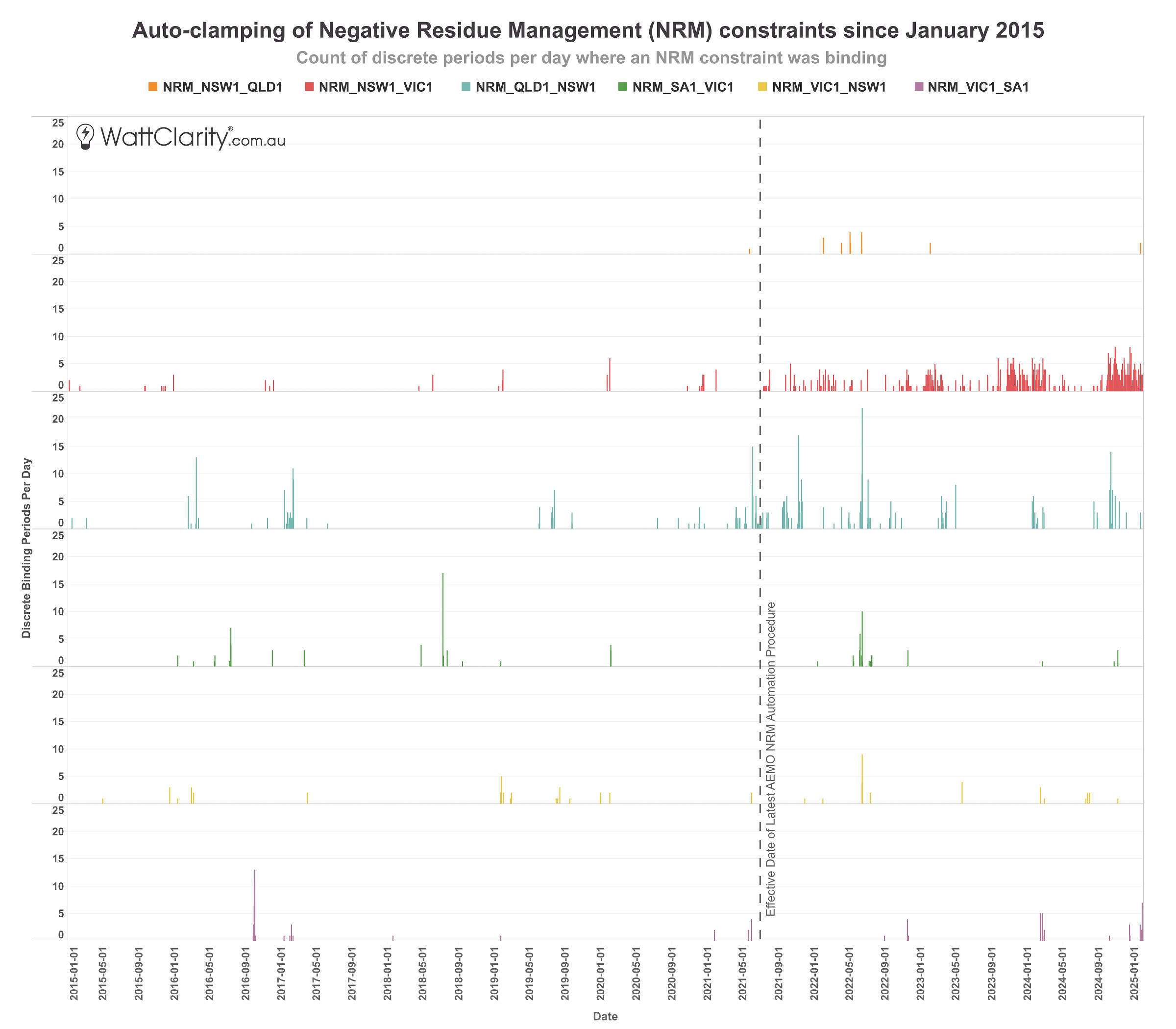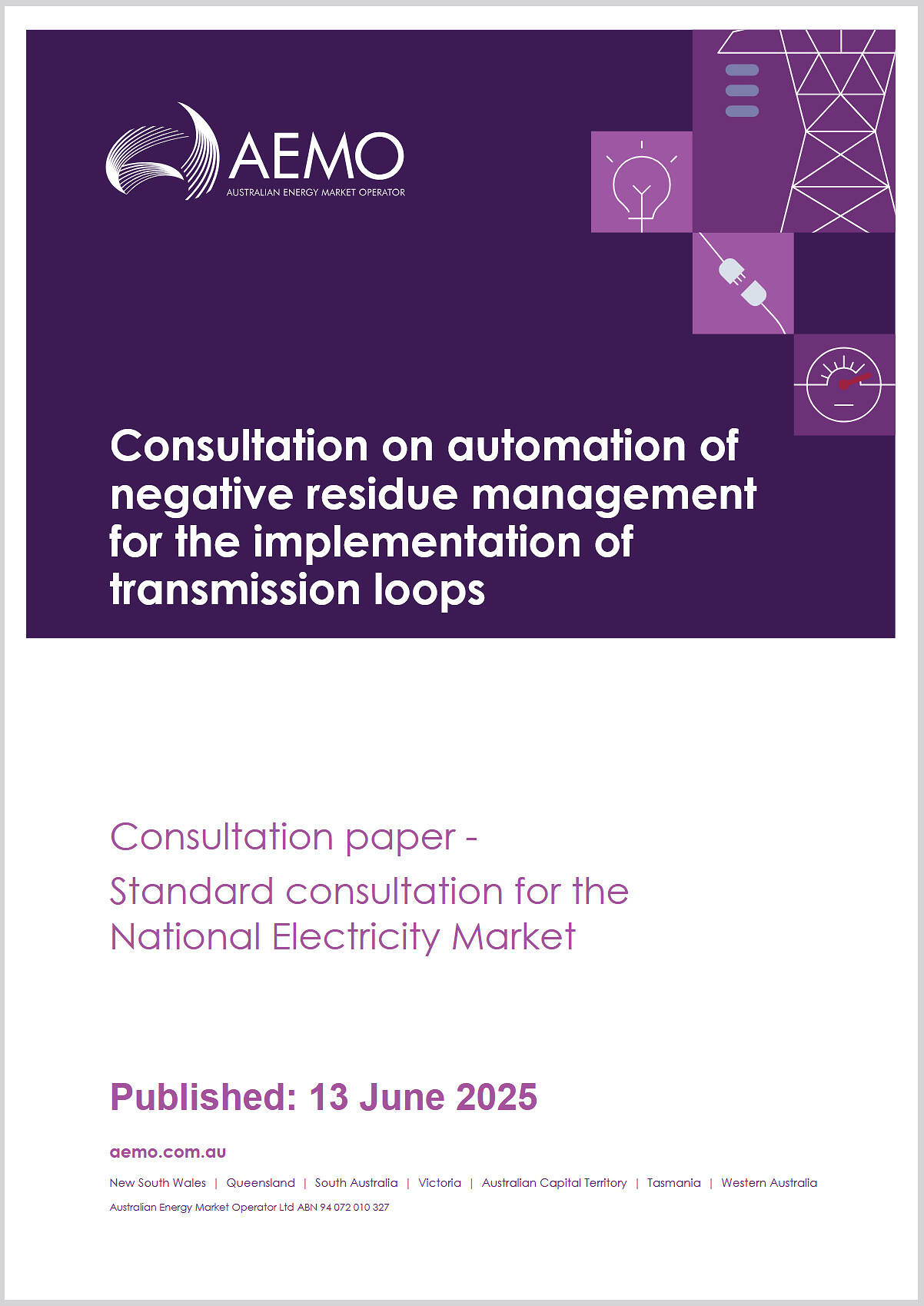Last Friday, the AEMO opened a new consultation on proposed changes to its automated Negative Residue Management (NRM) processes, ahead of the completion of Stage 2 of Project Energy Connect (PEC), expected in late 2026.
Under current arrangements, the AEMO clamps counter-price flows on an interconnector’s direction to prevent the accumulation of negative Inter-Regional Settlement Residues (IRSRs) beyond a threshold of -$100,000. But the looped transmission topology created by PEC—linking NSW, SA, and VIC—complicates this, as individual directional residues may be negative even while the loop as a whole delivers a net positive residue.
In addition to the treatment of loop flows, the AEMO stated that they are also consulting on existing cycling issues and any other possible enhancements to the NRM process and design.
This caught our attention, as back in January we published this analysis that highlighted the increasing frequency of auto-clamping in recent years — including cases where flows were prematurely unclamped, only to be re-clamped multiple times in a single day (i.e. cycling).

The number of discrete instances where NRM constraints began binding had been increasing in recent years, most notably for the interconnection direction from NSW to VIC.
Source: AEMO MMS
On the topic of cycling, pg. 14 of the consultation document stated:
AEMO has identified that the predominant cause for premature exit from NRM management is the cessation of negative residue accumulation once clamping reduces physical flow limits on a directional interconnector to zero. A half-hour without negative residues satisfies the automated process’s criterion for deactivation and very frequently leads to unclamping regardless of underlying market conditions.
Based on this analysis, AEMO has identified two potential modifications to NRM process and NRM constraints to reduce the frequency of cycling:
- A change to NRM constraints so that minimum flow limits on a directional interconnector will not be reduced to zero but to a small non-zero value such as 20 MW. This would allow limited accumulation of small negative residues to continue throughout a management period if the underlying market conditions for counter-price flows persist. The NRM process would detect this ongoing negative residue buildup and extend the management period accordingly.
- The introduction of a ‘graduated release’ stage before exit from any NRM management period. During graduated release, NRM constraint limits would be progressively relaxed in successive dispatch intervals by predefined amounts, allowing market outcomes at successively higher flow limits to be assessed prior to the end of the management period. This would allow deferral of exit if negative residues persist or reappear during the relaxation process.
These possible modifications are not mutually exclusive.
—
Stakeholders have until 5:00pm Friday 11th of July 2025 to provide submissions. Full details of the consultation are available on the AEMO’s website.



Be the first to comment on "AEMO launches consultation to update Negative Residue Management automation procedures"